-
June 4 1783
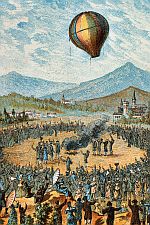
First Hot Air balloon flight by Montgolfier brothers
On this day in 1783, Joseph-Michel and Jacques-Étienne Montgolfier, performed the first public demonstration of a hot-air balloon.
The feat took place in the marketplace in Annonay, France using a balloon made of silk and lined with paper that was 33 feet (10 meters). Nobody was aboard. The balloon rose to between 5,200 and 6,600 feet (1,600 to 2,000 m) and stayed aloft for 10 minutes, traveling more than a mile (about 2 kilometers).
That year, the Montgolfiers built a balloon that carried the first living passengers aloft, and in November a balloon that carried the first human passengers. -
June 24 1883
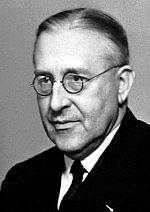
Birth of Victor Francis Hess
On this day in 1883 was born in Styria, Austria, the Austrian-American physicist Victor Hess who shared with Carl D. Anderson of the United States the Nobel Prize in Physics in 1936 for his discovery of cosmic rays.
He had emigrated from his native Austria to the United States in 1938, then naturalized.
By means of instruments transported aboard balloons that he himself manned, Hess and others demonstrated that the radiation that ionizes the atmosphere was of cosmic origin. He experimented in 1939 with a 27-day cycle of cosmic ray intensity in the sun's magnetic field and correlated it with the 27-day rotation period of the sun. He also worked on the design of methods to detect small amounts of radioactive substances.
Throughout his life Hess made fundamental contributions to the understanding of radiation and its effects on the human body. He died in Mount Vernon, New York in 1964. -
June 26 1935
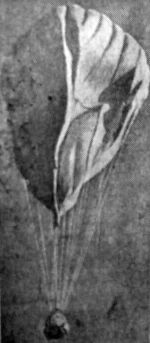
Flight of the USSR-1 Bis from Kuntsevo
On this day in 1935, was performed the flight of the USSR-1 Bis using the same gondola of the USSR-1 mission but re-fitted with new suspension with a quick-release latch that enabled instant separation of the gondola from the envelope, and a large (1,000 square meters, 34 meters diameter) parachute capable of stabilizing the fall at safe speeds.
The USSR-1 Bis lifted off from Kuntsevo, near Moscow carrying onboard military pilots Christian Zille as flight commander, Yury Prilutsky who acted as co-pilot and professor Alexander Verigo as an on-board researcher. The balloon reached the planned altitude of 16,000 meters where an accidental release of hydrogen, probably caused by a faulty valve, forced it into an unexpected descent. After expending all available ballast, Prilutsky and Verigo bailed out on personal parachutes at low altitudes while the flight commander stayed on board and managed to perform a soft landing.
The crew were hailed as heroes and awarded the Order of Lenin. -
June 4 1947
First balloon launch from Alamogordo AAF (later Holloman AFB)
On this day in 1947, was launched the first research balloon from Holloman AFB then denominated Alamogordo Army Air Field. The operation was in charghe of a team from the New York University under contract with the Air Materiel Command and the flight involved a cluster of rubber balloons.
-
June 2 1957
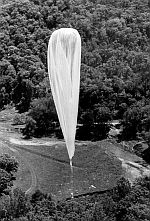
Captain Joseph Kittinger reaches 97.000 ft in Manhigh I mission
On this day in 1957, Captain Joe Kittinger a then young but highly experienced jet pilot assigned to the Flight Test Division of the Air Force Missile Development Center, piloted the first manned balloon mission of the "MANHIGH" balloon program carried out by the US Air Force.
The balloon was launched at Fleming Field Airport, Minnesota and set a world record that day, reaching a height of 96,784 feet. In addition to a life-threatening cabin pressure issue, the onboard oxygen levels rapidly depleted during the six-hour flight and radio problems meant Kittinger could only communicate with ground control by Morse code.
The capsule finally come to rest on the bank of Indian Creek just north of Weaver, Minnesota. At the instant of contact, the balloon was released, and the capsule toppled into the shallow water of the creek. Inmmediately after the landing, two helicopters landed in the clearing and assisted Captain Kittinger to get out from the capsule. -
June 27 1957
First manned balloon ascent into a thunderstorm
On this day in 1957, Lieutenant Commander Malcolm D. Ross, USN, and Charles B. Moore of the Arthur D. Little Co., successfully completed a Stratolab balloon flight to investigate the interior of a thunderstorm, ascending from the top of Mount Withington near Socorro, New Mexico, into the towering cumulus cloud above the mountain. The flight was the first of a series conducted during the summer under the sponsorship of the Office of Naval Research and the Bureau of Aeronautics.
-
June 30 1957
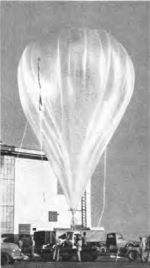
First Transosonde balloon launch from Iwakuni, Japan
On this day in 1957 was inaugurated a program to gather daily weather data over the Pacific, North America, and the Atlantic by the use of the so-called transosonde balloons, with the release of the first balloon from Naval Air Station Iwakuni, Japan. The program was carried out under the supervision of the Office of Naval Research, U.S. Navy.
The balloon, set to float constantly at a height of about 30,000 feet carried instruments which reported pressure and temperature every two hours.
The duration of each flight was planned to be between five and eight days with the termination point somewhere in the Atlantic, short of the European coast. -
June 23 1966
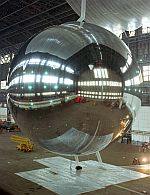
PAGEOS I satelloon put in orbit
On this day in 1966, was launched from Vandenberg AFB NASA's PAGEOS I (Passive Geodetic Earth-Orbiting Satellite) an aluminum-coated Mylar balloon of the ECHO I type also called "satelloon". Balloon was folded and packaged inside spherical canister ejected into space as launch vehicle reached orbital velocity and the folded satellite automatically inflated to 100-ft.- diameter sphere.
PAGEOS I carried no instruments. By reflecting sunlight, satellite would provide orbiting point source of light to be photographed over projected five-year period to determine size and shape of earth to a degree never before possible; in orbit, satellite should be as bright as star Polaris. Simultaneous observations from 41 portable camera stations around world would be used to construct three-dimensional geodetic reference system. Resulting satellite triangulation network would make it possible to obtain distance between two surface points on earth 3,000 miles apart to an accuracy of 32 ft.
In the early 1970s PAGEOS varied from 2nd apparent magnitude to beyond visibility over a period of a few minutes, indicating a possible burst in orbit. Last and bigger fragments of PAGEOS reentered earth's atmosphere in 2016. -
June 11 1985
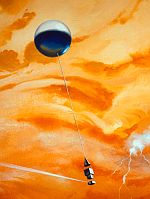
First balloon of Vega mission released on Venus
On this day in 1985, a Soviet spacecraft called VEGA inserted the first meteorological balloon with an instrumented gondola into the atmosphere of Venus. The balloon had a nominal diameter of 3.4 meters and supported a total mass of 21 kg, including a 6.9 kg gondola which included in situ sensors that measured pressure, temperature, vertical wind velocity, cloud particle backscatter, ambient light level, and frequency of lightning. The VEGA-1 balloon entered 7° north of the equator and floated in a region of the clouds identified as convective at an initial equilibrium float altitude of 53.6 km. It was tracked over a distance of more than 11.000 km, encountering dawn about 33 hours (8.000 km) after injection and then penetrating far into the daylit hemisphere. It is assumed that the float time was longer than the 46 hours of transmission for each balloon, which was limited by battery lifetime.
The VEGA balloons were the first and so far only balloons ever flown in another planet. They were capable of sampling a selected range of altitudes for an extended period of time and therefore provided the first opportunity to observe the temporal behavior and detailed horizontal structure of the Venus atmosphere at these levels. -
June 15 1985
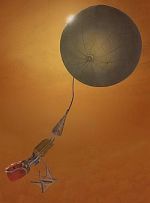
Second balloon of Vega mission released on Venus
On this day in 1985, a Soviet spacecraft called VEGA inserted the second meteorological balloon with an instrumented gondola into the atmosphere of Venus. The balloon had a nominal diameter of 3.4 meters and supported a total mass of 21 kg, including a 6.9 kg gondola which included in situ sensors that measured pressure, temperature, vertical wind velocity, cloud particle backscatter, ambient light level, and frequency of lightning. The VEGA-2 balloon entered 7° south of the equator and floated in a region of the clouds identified as convective at an initial equilibrium float altitude of 53.6 km. It was tracked over a distance of more than 11.000 km, encountering dawn about 33 hours (8.000 km) after injection and then penetrating far into the daylit hemisphere. It is assumed that the float time was longer than the 46 hours of transmission for each balloon, which was limited by battery lifetime.
The VEGA balloons were the first and so far only balloons ever flown in another planet. They were capable of sampling a selected range of altitudes for an extended period of time and therefore provided the first opportunity to observe the temporal behavior and detailed horizontal structure of the Venus atmosphere at these levels. -
June 6 1988
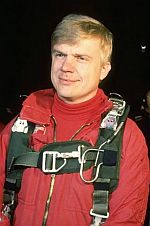
Per Lindstrand sets a new high altitude record in a hot-air balloon
On this day in 1988, Per Lindstrand a Swedish aeronautical engineer, pilot, adventurer and entrepreneur performed a record setting flight in a hot-air balloon that reached 19.811 meters (64.997 feet).
The 12-story-tall balloon named "Stratoquest" took off from Plano, Texas and took 2 hours from liftoff to reach the top altitude drifting only 15 to 20 miles down range. Lindstrand used a pressurized capsule built to withstand the rigors of a flight at under near-zero-atomosphere conditions, and was equipped with comprehensive instrumentation for monitoring altitude, temperature, fuel, oxygen and life support systems.
The flight stood as the highest absolute altitude reached by a hot air balloon, until 2005 when Vijaypat Singhania exceeded it. -
June 14 2013
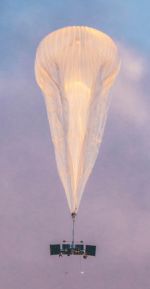
Project Loon revealed to the public
On this day in 2013, Google X revealed Project Loon to the world in New Zealand. Loon was an experimental project to create a network of balloons traveling on the troposphere/stratosphere to offer access to internet above rural and remote areas and also help fill coverage gaps or help to connect people in zones affected by disasters. The balloons used in the project were steerable having the ability of remain over areas of interest.
During its operative life, Loon launched more than 2000 balloons and provided internet services to areas affected by natural disasters, deploying balloons to Puerto Rico following Hurricane Maria in 2017 and to Peru following an earthquake in 2019. In march 2020 Loon started commercial operations in Kenya, but despite success, a year later, Loon (which had become its own separate entity in July 2018) announced that it would shut down operations due to the impossibility of carrying out a sustainable business model.
Last balloon in flight landed in May 2021 in Central Australia.

